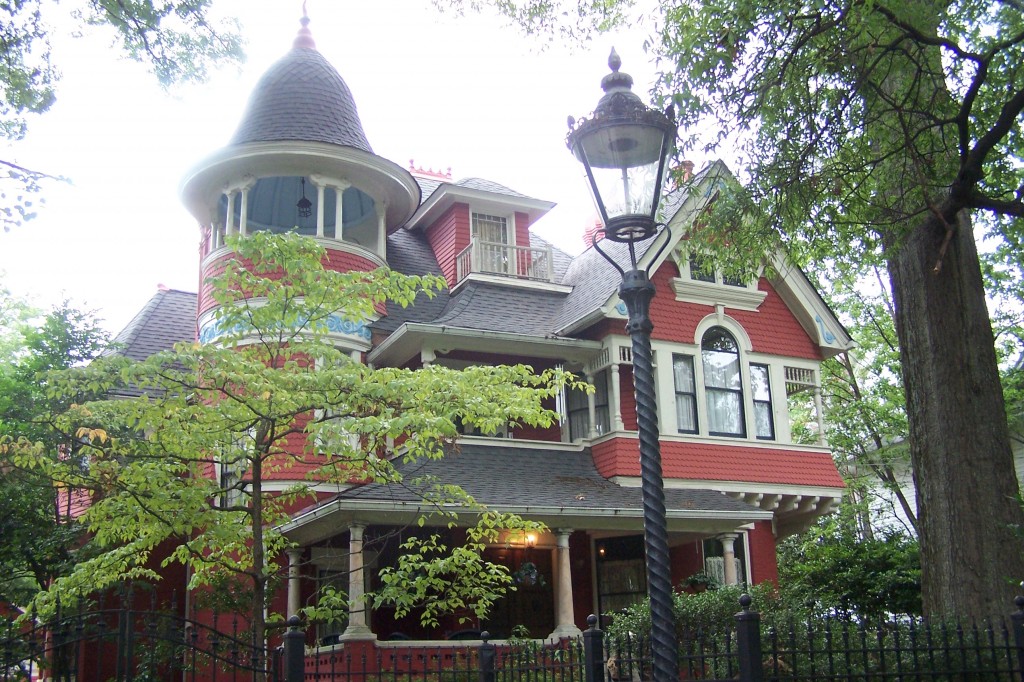Inman Park is a neighborhood on the east side of Atlanta, Georgia, and its first planned suburb. It was named for Samuel M. Inman. Inman Park contains Atlanta’s best collection of residential architecture from the late 19th and early 20th centuries. Styles include Queen Anne, high-style Italianate and Romanesque mansion as well as smaller bungalows, shotguns, and foursquares. Inman Park was Atlanta’s first example of a garden suburb, with great attention paid to street layout, parks and other public space, and would inspire other Atlanta garden suburbs such as the Frederick Law Olmsted-designed Druid Hills.
There are two historic districts within the Inman Park neighborhoods: the Inman Park historic district, and the Inman Park-Moreland Historic District, originally the separate suburb of Moreland Park.
Inman Park is very walkable and bikeable. Walkscore.com gives the nabe a Walk Score of 81 and a Bike Score of 78.
History
Inman Park (proper) was planned in the late 1880s by Joel Hurt, a civil engineer and real-estate developer who intended to create a rural oasis connected to the city by the first of Atlanta’s electric streetcar lines. The East Atlanta Land Company acquired and developed more than 130 acres east of the city and Hurt named the new suburb for his friend and business associate, Samuel M. Inman. Joseph Forsyth Johnson was hired as landscape designer for Inman Park who included curvilinear street designs and liberal usage of open spaces in his planning.
The Atlanta Constitution in 1896 grandly described Inman Park:
“High up above the city, where the purest breezes and the brightest sunshine drove away the germs of disease, and where nature had lavished her best gifts, the gentlemen who conceived the though of Inman Park found the locality above all others which they desired. It was to be a place of homes, of pretty homes, green lawns, and desirable inhabitants. And all save those who would make desirable residents have been excluded…” “It’s the prettiest, highest, healthiest and most desirable locality I ever saw. Everybody is friendly and neighborly. There…(is) not a single objectionable inhabitant. And as far as accessibility it ranks second to no residence portion of the city. We have three car lines and frequent schedules.”
Moreland Park was by contrast developed as a more traditional, incremental building of sub-divisions as opposed to the grand plan for Inman Park proper.
Decline
The arrival of the automobile allowed upper class Atlantans to live in suburbs farther north from downtown workplaces, such as Morningside and what is now considered Buckhead. Inman Park became less fashionable and the exuberant Victorian architecture came to seem dated. The mansions came to be subdivided into apartments.
Similar to other intown neighborhoods such as Virginia Highland, Inman Park fell to blight during the white middle and upper class exodus to the northern suburbs in the 1950s and 1960s, and was “an economically depressed neighborhood of mostly blue-collar white folks, elderly couples who could not afford to move out and families on disability and welfare. They lived in rented bungalows or big houses chopped up into tiny roach-infested apartments.”
Inman Park today
After decades of restoration and renewal, Inman Park is now a highly coveted intown neighborhood with numerous million-dollar properties.
Former industrial areas on the west side of the neighborhood have been redeveloped into mixed-use complexes. The former General Pipe and Foundry site is now North Highland Steel and the Mead paper plant site is now Inman Park Village. The former Atlanta Stove Works was transformed into a mixed-use office and restaurant space, which will now be added to the space across Krog Street to form the Krog Street Market.
Most information about Inman Park courtesy of Wikipedia.



















 ©2021 BeltLandia. All information provided is deemed reliable but is not guaranteed and should be independently verified. Properties subject to prior sale or rental.
©2021 BeltLandia. All information provided is deemed reliable but is not guaranteed and should be independently verified. Properties subject to prior sale or rental.